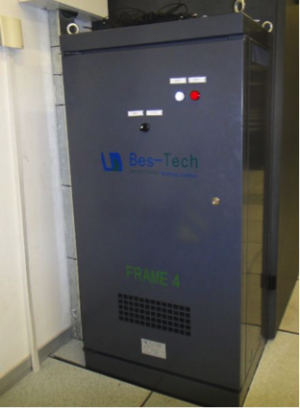Cisco’s EnergyOps team is tasked with reducing energy consumption and increasing energy efficiency at our offices, labs, and data centers worldwide. Cisco’s labs are our largest consumer of energy and although we are putting a lot of effort into improving the efficiency of those environments, we’re finding great success in taking a more holistic approach that includes implementing efficiency opportunities within all of our building support systems such as HVAC (heating, ventilation, and air conditioning), building controls, and lighting.
For example, in January 2014 we engaged in such a holistic energy efficiency effort at a number of our Shanghai facilities, which included three primary areas of improvement:
- Computer room air conditioning (CRAC) unit retrofits
- Software upgrades for cooling equipment
- Lighting upgrades for offices
In just 3 months, 5 buildings at our Shanghai location underwent energy efficiency upgrades in these areas that will generate approximately US$145,000 in savings per year.

Computer Rooms
As you can imagine, computer rooms at Cisco, like our data centers, can be quite large. They can consume a lot of electricity and generate a lot of heat that needs to be cooled constantly. So, in some of our Shanghai buildings, we retrofitted the CRAC units to operate more efficiently based on actual cooling demand. We did this by installing inverters that allow variable control of fan motors and refrigerant pumps as opposed to operating the equipment inefficiently at either full-on or full-off speed. The result? Electricity demand dropped by 30% and electricity consumption dropped by an average of 25%.
Cooling Equipment
Next, we upgraded the software used to control the cooling systems in 2 of the Shanghai buildings. The cooling system’s main functions include centralized on-off setting of indoor cooling units, schedule management, and remote configuration for room temperature and fan speed. We improved the efficiency of these systems by linking them to real-time weather data and adding more layers of controllability, which allow us to adjust the system based on variable cooling demand and outdoor conditions. This upgrade has reduced the energy consumption of these cooling systems by approximately 5 to 15%, depending on the day. We have also seen fewer system failures such as false alarms and communication errors, an added bonus.

Lighting
Lastly, lighting upgrades were also part of the efficiency repertoire and resulted in a vast improvement for our Shanghai buildings. There were 260 35-watt halogen spotlights in the China Research and Development Center pantry and reception area. We replaced these with LED lights that provide the same illumination but consume only 3 to 4 watts; a veritable “no-brainer” that will pay for itself in about 2 years.
Increasing energy efficiency and reducing greenhouse gas emissions are major priorities for Cisco right now and we are driving broader implementation of efficiency improvements like those made at our Shanghai facilities throughout Cisco’s global real estate portfolio. Learn more at csr.cisco.com.
How are you reducing energy efficiency at your office or company? Please share your ideas in the comments below.


CONNECT WITH US